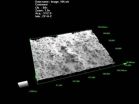(Press-News.org) The flooding in New York and New Jersey caused by Superstorm Sandy prompted calls from Gov. Andrew Cuomo and other officials to consider building storm surge barriers to protect Lower Manhattan from future catastrophes. But, such a strategy could make things even worse for outlying areas that were hit hard by the hurricane, such as Staten Island, the New Jersey Shore and Long Island's South Shore, a City College of New York landscape architecture professor warns.
"If you mitigate to protect Lower Manhattan, you increase the impact in other areas," says Catherine Seavitt Nordenson, associate professor of landscape architecture in CCNY's Spitzer School of Architecture. "Everyone outside of the surge protection zone would be in jeopardy because the water doesn't get reduced, it just goes somewhere else. It's an environmental justice issue. You can't just save Wall Street."
Professor Seavitt calls, instead, for deploying a storm defense strategy that combines elements of soft infrastructure with the hardening of existing infrastructure such as the subway system, highways and power plants.
'Techniques from nature and ecology'
"The idea of soft infrastructure is to use techniques from nature and ecology to improve resiliency," she explains. "Environments that are more resilient bounce back faster after storms, and greater resiliency reduces the velocity of and damage caused by the water's surge." Additionally, it would be much less expensive than building storm surge barriers, with costs running to hundreds of millions of dollars instead of billions.
She first proposed development of soft infrastructure in "On the Water/Palisade Bay," a report published in 2010 in collaboration with structural engineer Guy Nordenson and architect Adam Yarinsky, and funded by the Fellows of the American Institute of Architects' biannual Latrobe Prize. Mr. Nordenson is Professor Seavitt's husband.
The team's research focused on New York's Upper Bay, which is bounded by Manhattan, Brooklyn, Staten Island and New Jersey. Its proposal consisted of strategies to adapt to and mitigate the effects of rising sea levels caused by climate change, including increased potential storm surges from hurricanes and nor'easters.
"We wanted to show how soft infrastructure could be used to transform the coastal edge in order to create a healthier ecology and reduce the extent of storm damage," she says. "There are things we can do besides building higher and higher seawalls everywhere. For example, if we replace a wall with a gradient edge that slopes into the water or we give the shoreline a more irregular shape there will be more room to accommodate water."
Among the techniques it proposed were restoring and enlarging wetlands, creating reefs and archipelagoes of artificial islands and seeding oyster beds. Spoils from harbor dredging and deepening, which is regularly performed by the U.S. Army Corps of Engineers, could be used for these beneficial purposes.
Reefs and wetlands would mitigate destruction by absorbing water and dissipating wave energy. Archipelagoes of small, artificial islands would weaken wave energy in the water column. Oysters and other mollusks would biologically filter and help cleanse the water in the bay.
Improved resiliency
"Through our research we found that improving water quality and wetlands ecology would improve the area's resiliency to storm," she notes. "If you can absorb water in wetland areas, it has a place to go. It can percolate into the earth instead of rebounding from a seawall or overtopping a wall. We can engineer solutions to absorb water and slow its velocity. There may still be flooding, but there will be less damage."
Additionally, the report called for using – and extending – old abandoned piers and extracting slips into the city to allow water to enter flood zones in a more controlled way, thus minimizing damage. Calm water areas could be established behind piers, which would serve as storm surge buffers. Water would still enter some streets, but these could be engineered as bioswales, incorporating a simple gravity flow system that would enable the waters to be absorbed, and safely and readily recede.
Even if soft infrastructure strategies were implemented, some critical infrastructure would still need to be hardened, i.e. made waterproof, Professor Seavitt notes. Specifically, she recommends protecting subway entrances and sidewalk grates to prevent flooding of the public transit system, relocating or hardening waterfront power plants and moving critical communications and power infrastructure out of the basements of commercial and residential buildings.
Soft infrastructure techniques can be applied, as well, to protect populated areas in the outlying coastal regions that suffered extensive storm damage such as Long Island, Staten Island and the Jersey Shore. Offshore reefs and barrier islands could be created to protect shorelines and inhabited barrier islands. Many of these areas are shallower than the Upper Bay so it may be easier to work in them, she says.
One technology that could play a role in this process is a recent Dutch invention known as a sand motor, in which enormous quantities of sand are deposited offshore. Waves, currents and tides distribute it in a natural way, creating a protective barrier island.
Currently, Professor Seavitt is working with Guy Nordenson & Associates and the Port Authority of New York and New Jersey on a pilot project to create an artificial island at the Gowanus Flats, a shallow section of Upper Bay off Brooklyn's Sunset Harbor waterfront. She also notes that efforts are underway to create new oyster reefs around Governors Island as well as wetland restoration through the reuse of dredged sediment in Jamaica Bay.
### END
CCNY landscape architect offers storm surge defense alternatives
Catherine Seavitt Nordenson says environmentally friendly 'soft infrastructure' mitigates flood damage without sending harm elsewhere
2012-11-20
ELSE PRESS RELEASES FROM THIS DATE:
New tumor tracking technique may improve outcomes for lung cancer patients
2012-11-20
PHILADELPHIA— Medical physicists at Thomas Jefferson University and Jefferson's Kimmel Cancer Center are one step closer to bringing a new tumor-tracking technique into the clinic that delivers higher levels of radiation to moving tumors, while sparing healthy tissue in lung cancer patients.
Evidence has shown a survival advantage for lung cancer patients treated with higher doses of radiation. Therefore, there is an increased interest to find novel ways to better track tumors—which are in constant motion because of breathing—in order to up the dosage during radiation ...
Multiple sclerosis 'immune exchange' between brain and blood is uncovered
2012-11-20
DNA sequences obtained from a handful of patients with multiple sclerosis at the University of California, San Francisco (UCSF) Medical Center have revealed the existence of an "immune exchange" that allows the disease-causing cells to move in and out of the brain.
The cells in question, obtained from spinal fluid and blood samples, are called B cells, which normally help to clear foreign infections from the body but sometimes react strongly with the body itself. One of the current theories of multiple sclerosis, which strikes hundreds of thousands of Americans and millions ...
Comments, traffic statistics help empower bloggers
2012-11-20
UNIVERSITY PARK, Pa. -- Whether bloggers are writing to change the world, or just discussing a bad break-up, they may get an extra boost of motivation from traffic-measuring and interactive tools that help them feel more connected to and more influential in their communities, according to researchers.
In a series of studies, female bloggers showed that they enjoyed blogging because it made them feel empowered and part of a community, said Carmen Stavrositu, who recently completed doctoral work in mass communications at Penn State. The studies also indicated that the sheer ...
Failed explosions explain most peculiar supernovae
2012-11-20
Supercomputer simulations have revealed that a type of oddly dim, exploding star is probably a class of duds—one that could nonetheless throw new light on the mysterious nature of dark energy.
Most of the thousands of exploding stars classified as type Ia supernovae look similar, which is why astrophysicists use them as accurate cosmic distance indicators. They have shown that the expansion of the universe is accelerating under the influence of an unknown force now called dark energy; yet approximately 20 type Ia supernovae look peculiar.
"They're all a little bit ...
Scripps Research Institute team identifies a potential cause of Parkinson's disease
2012-11-20
LA JOLLA, CA – November 19, 2012 – Deciphering what causes the brain cell degeneration of Parkinson's disease has remained a perplexing challenge for scientists. But a team led by scientists from The Scripps Research Institute (TSRI) has pinpointed a key factor controlling damage to brain cells in a mouse model of Parkinson's disease. The discovery could lead to new targets for Parkinson's that may be useful in preventing the actual condition.
The team, led by TSRI neuroscientist Bruno Conti, describes the work in a paper published online ahead of print on November 19, ...
Astronomers pin down origins of 'mile markers' for expansion of universe
2012-11-20
COLUMBUS, Ohio – A study using a unique new instrument on the world's largest optical telescope has revealed the likely origins of especially bright supernovae that astronomers use as easy-to-spot "mile markers" to measure the expansion and acceleration of the universe.
In a paper to appear in the Astrophysical Journal, researchers describe observations of recent supernova 2011fe that they captured with the Large Binocular Telescope (LBT) using a tool created at Ohio State University: the Multi-Object Double Spectrograph (MODS).
MODS measures the frequencies and intensities ...
Smoking in pregnancy tied to lower reading scores
2012-11-20
Yale School of Medicine researchers have found that children born to mothers who smoked more than one pack per day during pregnancy struggled on tests designed to measure how accurately a child reads aloud and comprehends what they read.
The findings are published in the current issue of The Journal of Pediatrics.
Lead author Jeffrey Gruen, M.D., professor of pediatrics and genetics at Yale School of Medicine, and colleagues analyzed data from more than 5,000 children involved in the Avon Longitudinal Study of Parents and Children (ALSPAC), a large-scale study of ...
Astronomers directly image massive star's 'super-Jupiter'
2012-11-20
Astronomers using infrared data from the Subaru Telescope in Hawaii have discovered a "super-Jupiter" around the bright star Kappa Andromedae, which now holds the record for the most massive star known to host a directly imaged planet or lightweight brown dwarf companion.
Designated Kappa Andromedae b (Kappa And b, for short), the new object has a mass about 12.8 times greater than Jupiter's. This places it teetering on the dividing line that separates the most massive planets from the lowest-mass brown dwarfs. That ambiguity is one of the object's charms, say researchers, ...
Ah, that new car smell: NASA technology protects spacecraft from outgassed molecular contaminants
2012-11-20
Outgassing — the physical process that creates that oh-so-alluring new car smell — isn't healthy for humans and, as it turns out, not particularly wholesome for sensitive satellite instruments, either. But a team of NASA engineers has created a new way to protect those instruments from its ill effects.
For some people, the best part about buying a new car is its factory-fresh new car smell, a distinctive aroma created when the chemicals and residual solvents used to manufacture dashboards, car seats, carpeting and other vehicle appointments outgas and fill the cabin. ...
Some cells don't know when to stop
2012-11-20
Certain mutated cells keep trying to replicate their DNA — with disastrous results — even after medications rob them of the raw materials to do so, according to new research from USC.
New imaging techniques allowed scientists to see for the first time that while chemotherapy drugs shut down the DNA replication process of most cancer cells, so-called "checkpoint mutants" just keep chugging along, unwinding the DNA and creating damaged DNA strands that can result in the kind of abnormalities seen in cancer cells.
"Older methods suggested that these checkpoint mutants ...
LAST 30 PRESS RELEASES:
First Editorial of 2026: Resisting AI slop
Joint ground- and space-based observations reveal Saturn-mass rogue planet
Inheritable genetic variant offers protection against blood cancer risk and progression
Pigs settled Pacific islands alongside early human voyagers
A Coral reef’s daily pulse reshapes microbes in surrounding waters
EAST Tokamak experiments exceed plasma density limit, offering new approach to fusion ignition
Groundbreaking discovery reveals Africa’s oldest cremation pyre and complex ritual practices
First breathing ‘lung-on-chip’ developed using genetically identical cells
How people moved pigs across the Pacific
Interaction of climate change and human activity and its impact on plant diversity in Qinghai-Tibet plateau
From addressing uncertainty to national strategy: an interpretation of Professor Lim Siong Guan’s views
Clinical trials on AI language model use in digestive healthcare
Scientists improve robotic visual–inertial trajectory localization accuracy using cross-modal interaction and selection techniques
Correlation between cancer cachexia and immune-related adverse events in HCC
Human adipose tissue: a new source for functional organoids
Metro lines double as freight highways during off-peak hours, Beijing study shows
Biomedical functions and applications of nanomaterials in tumor diagnosis and treatment: perspectives from ophthalmic oncology
3D imaging unveils how passivation improves perovskite solar cell performance
Enriching framework Al sites in 8-membered rings of Cu-SSZ-39 zeolite to enhance low-temperature ammonia selective catalytic reduction performance
AI-powered RNA drug development: a new frontier in therapeutics
Decoupling the HOR enhancement on PtRu: Dynamically matching interfacial water to reaction coordinates
Sulfur isn’t poisonous when it synergistically acts with phosphine in olefins hydroformylation
URI researchers uncover molecular mechanisms behind speciation in corals
Chitin based carbon aerogel offers a cleaner way to store thermal energy
Tracing hidden sources of nitrate pollution in rapidly changing rural urban landscapes
Viruses on plastic pollution may quietly accelerate the spread of antibiotic resistance
Three UH Rainbow Babies & Children’s faculty elected to prestigious American Pediatric Society
Tunnel resilience models unveiled to aid post-earthquake recovery
Satellite communication systems: the future of 5G/6G connectivity
Space computing power networks: a new frontier for satellite technologies
[Press-News.org] CCNY landscape architect offers storm surge defense alternativesCatherine Seavitt Nordenson says environmentally friendly 'soft infrastructure' mitigates flood damage without sending harm elsewhere




